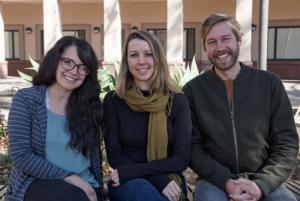In a graduate seminar Amber VanDerwarker taught in 2016, “Archaeology of Gender,” the UC Santa Barbara professor of anthropology and her students confronted an odd fact: Although the majority of archaeology graduate students in California are women, roughly 70 percent end up choosing careers in cultural resource management (CRM) over academia.
They wanted to know why: Is sexual harassment a factor? What role does mentorship play? How is gender inequity expressed in CRM and academia? What is the relationship between gender and publication? Their inquiries led to the UCSB Gender Equity Project, which produced five papers exploring multiple issues associated with women in archaeology, all now published in the journal California Archaeology. They found a number of factors that challenge women in archaeology, said lead author VanDerwarker, who lays out the biggest of them in “The UCSB Gender Equity Project: Taking Stock of Mentorship, Equity and Harassment in California Archaeology Through Qualitative Survey Data.”
Sexual harassment, a dearth of female and minority mentors, discrepancies in the number of women in academia, pay inequality and gender-based disparities in publishing all challenge women in archaeology, VanDerwarker said. To get a better understanding of the issues, UCSB anthropology graduate students conducted two detailed surveys — one on mentorship, the other on equity and sexual harassment — of members of the Society for California Archaeology (SCA).
To learn more about what their research found, please visit here.
Related Link:
News Date:
Thursday, February 7, 2019
March 15, 2019 - 10:04am







